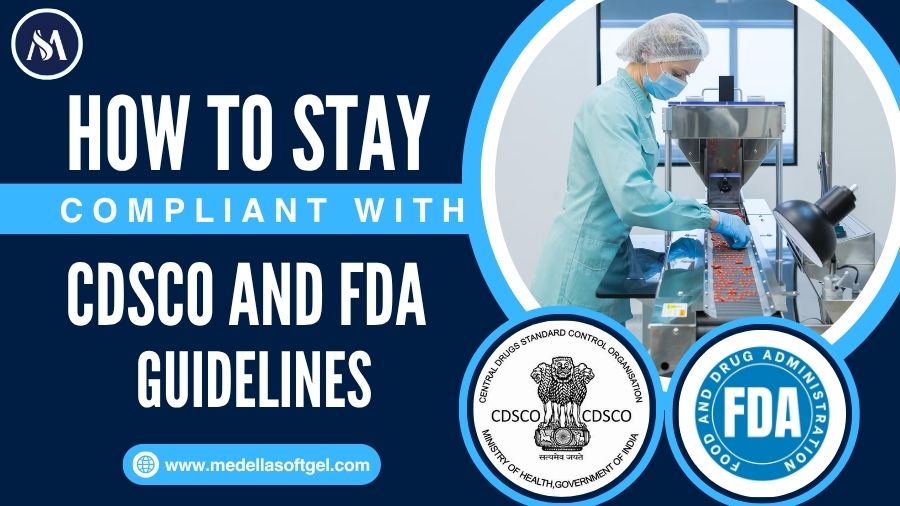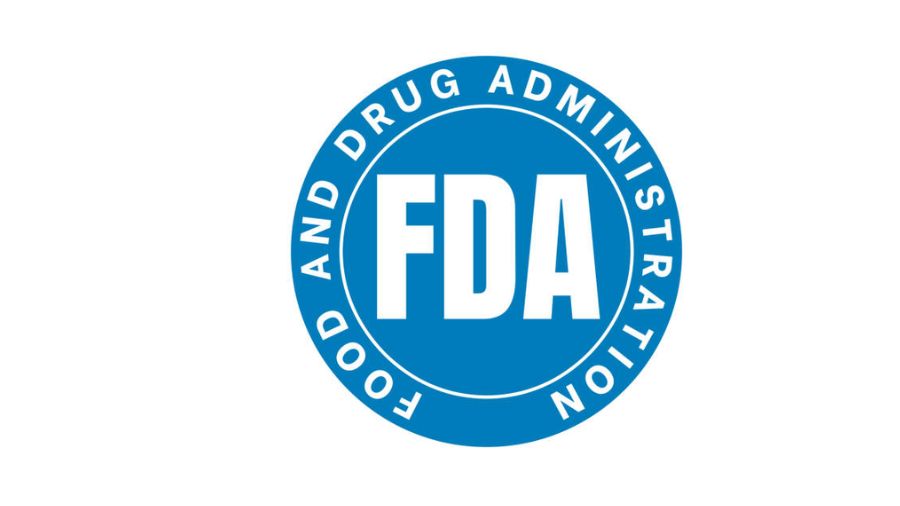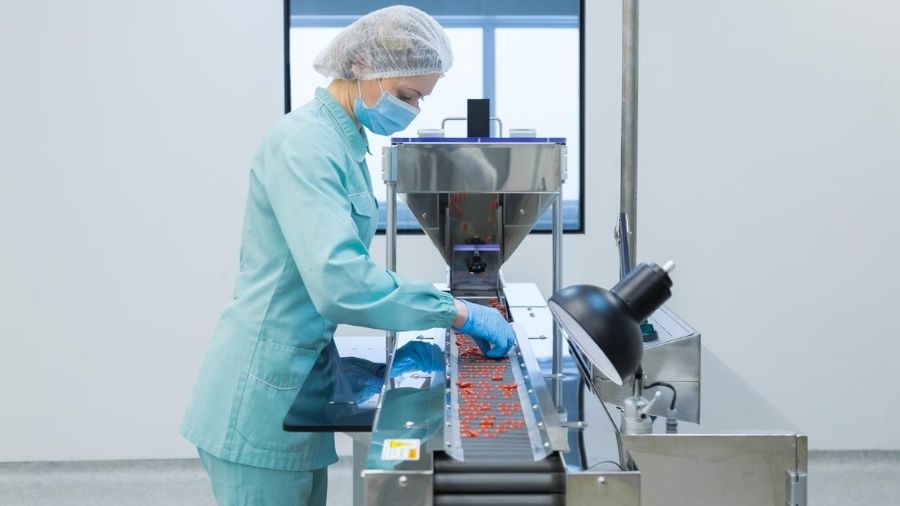
How to Stay Compliant with CDSCO and FDA Guidelines
In the world of medicine, nothing is more crucial than protection, quality, and efficiency. To make sure these measures are followed, pharmaceutical corporations should comply with strict rules established by governing bodies. In India, this body is the Central Drugs Standard Control Organization (CDSCO), and internationally, the U.S. Food and Drug Administration (FDA) sets a prime global benchmark. Staying adherent to CDSCO guidelines and FDA Guidelines isn’t only a legal demand; it is the base of a reliable pharmaceutical business.
Overview of Global Regulatory Authorities
The Foundation – Understanding the Key Regulatory Bodies
Prior to moving ahead, it is crucial to understand who you are dealing with and what their main concentration is.
1. Central Drugs Standard Control Organization (CDSCO) –

The CDSCO is India’s national regulatory authority. It runs under the Drugs and Cosmetics Act, 1940, and the Drugs and Cosmetics Rules, 1945.
- Primary Role – To sanction new drugs, regulate clinical trials, set up quality measures for drugs, and control the quality of imported drugs in India.
- Key Regulation – Schedule M under the Drugs and Cosmetics Rules, 1945, which lays down the Good Manufacturing Practice (GMP) demands in India.
2. U.S. Food and Drug Administration (FDA) –
The FDA is a U.S. federal agency responsible for securing public health. While it is an American agency, its measures are internationally recognized as the gold standard for protection and quality, particularly for any corporation looking to export.

- Primary Role – To make sure that human and veterinary drugs are secure and useful.
- Key Regulation – Current Good Manufacturing Practice (cGMP) rules, primarily thorough in the Code of Federal Regulations (21 CFR Parts 210 and 211).
Mandatory Requirement – The Pharma Manufacturing License in India

The first, non-negotiable move for any pharmaceutical corporation, whether you are initiating your own factory or running as a third party medicine manufacturer in India, is getting the right license.
The Licensing Process –
The authority for giving the manufacturing license usually lies with the State Licensing Authority in consultation with the CDSCO for some categories.
1. Application Submission – You have to apply utilizing the prescribed forms based on the kind of drug.
2. Infrastructure & Facility Readiness – Your facility should fulfill the measures laid out in Schedule M. This includes –
- Complete, non-residential commercial building as the registered address.
- Separate and specialized zones for manufacturing, packaging, quality control, and storage.
- Sufficient provision for sanitation and hygiene.
3. Qualified Personnel – You should have a competent technical team, including a minimum of full-time technical personnel and skilled chemists/microbiologists for the Quality Control unit.
4. Equipment – A broad list of all machinery, as well as validation and calibration statements, is vital.
5. Site Inspection – A drug inspector will perform an on-site audit to examine the facility, tools, processes, and paperwork.
The license is issued only after a satisfactory inspection. Sustaining this license demands constant adherence to all appropriate CDSCO guidelines and timely renewal.
Special Focus – Third Party Pharma Manufacturing Companies

The model of contract manufacturing in pharmaceutical industry is quickly developing. When a pharma company outsources production to a third-party pharma manufacturing firm, adherence becomes a shared obligation.
1. The Quality Agreement –
For both the marketing company and the third-party medicine manufacturer in India, a written quality agreement is vital. This is a binding contract that provides information on who is responsible for which cGMP activities.
2. Due Diligence for Third-Party Manufacturing –
Prior to signing an agreement, the brand owner should perform a complete audit of the third-party pharma manufacturing company. Major things to check include –
- Regulatory Certifications – Do they have a legal pharma manufacturing license India? Do they have WHO-GMP certification? Do they have a track record of successful CDSCO/FDA audits?
- Infrastructure – Is the facility advanced, well-maintained, and fit for the particular dosage form?
- Compliance History – Check for past warning letters, non-conformities, or pharma products recalls. A clean history is a robust sign of trusted adherence.
Compliance Best Practices – Going Beyond the Basics

To not only fulfill but also exceed CDSCO guidelines and FDA guidelines, pharma firms have to embed quality into their whole organizational culture.
1. Robust Documentation and Record Keeping –
Documentation is the evidence of adherence. It should be clear, precise, complete, and sustained for a lawfully described duration.
- Batch Manufacturing Record – A thorough history of a batch of medicine, presenting what occurred, when, by whom, and what the outcomes were. Every BMR should match the master formula.
- Standard Operating Procedures – Thorough, step-by-step directions for every task. They should be effortlessly accessible and daily reviewed.
- Audit Trails (21 CFR Part 11) – For all electronic statements, a protected, computer-generated, time-stamped electronic record should be sustained to present when data was made, modified, or removed.
2. Quality Management System (QMS) –
A strong QMS is the umbrella under which all your adherence activities sit. It centralizes control over –
- Change Control – A formal system to handle and document any modification to a sanctioned procedure, material, or tool prior to its execution.
- Corrective and Preventive Actions – A system to investigate product failures or deviations, locate the root cause, and execute both corrective and preventive actions.
- Internal Audits – Routine, scheduled audits performed by your own team to forcefully find and solve adherence gaps prior to an inspector. Third party pharma manufacturing companies must schedule internal audits at least two times a year.
3. Pharmacovigilance (PV) –
Adherence does not end when the drug leaves the factory. Pharmacovigilance is the science of supervising the protection of medicines once they are on the market.
- Monitoring and Reporting – A system should be in place to supervise, research, and report all adverse drug reactions to the CDSCO and other appropriate international authorities on time.
- Periodic Safety Updated Reports – Manufacturers should present routine reports detailing the global protection experience of their medical products.
Staying Updated in a Dynamic Environment
The regulatory environment is continuously changing. New health crises, technological modernity, and quality problems force regulatory bodies to update their rules.
1. Observe Regulatory Portals – Keep an eye out for new circulars, draft guidelines, and final rules on the CDSCO and FDA websites. One important resource for notifications and applications in India is the CDSCO’s SUGAM Portal.
2. Ongoing Training – Make sure your regulatory affairs and quality assurance teams are regularly trained on the most recent developments. For example, it is necessary to fully comprehend and implement Schedule M’s transition from earlier versions to more recent, updated standards.
Any business, whether a market leader or a committed third-party medicine manufacturer in India like Medella Softgel, one of the best pharma company in India, can successfully navigate the complex world of CDSCO Guidelines and FDA Guidelines and guarantee the delivery of safe, high-quality medicine by dedicating itself to a culture of quality, meticulous documentation, and constant vigilance.
Also Read: Quality Assurance vs. Quality Control in Pharma – What’s the Difference?









